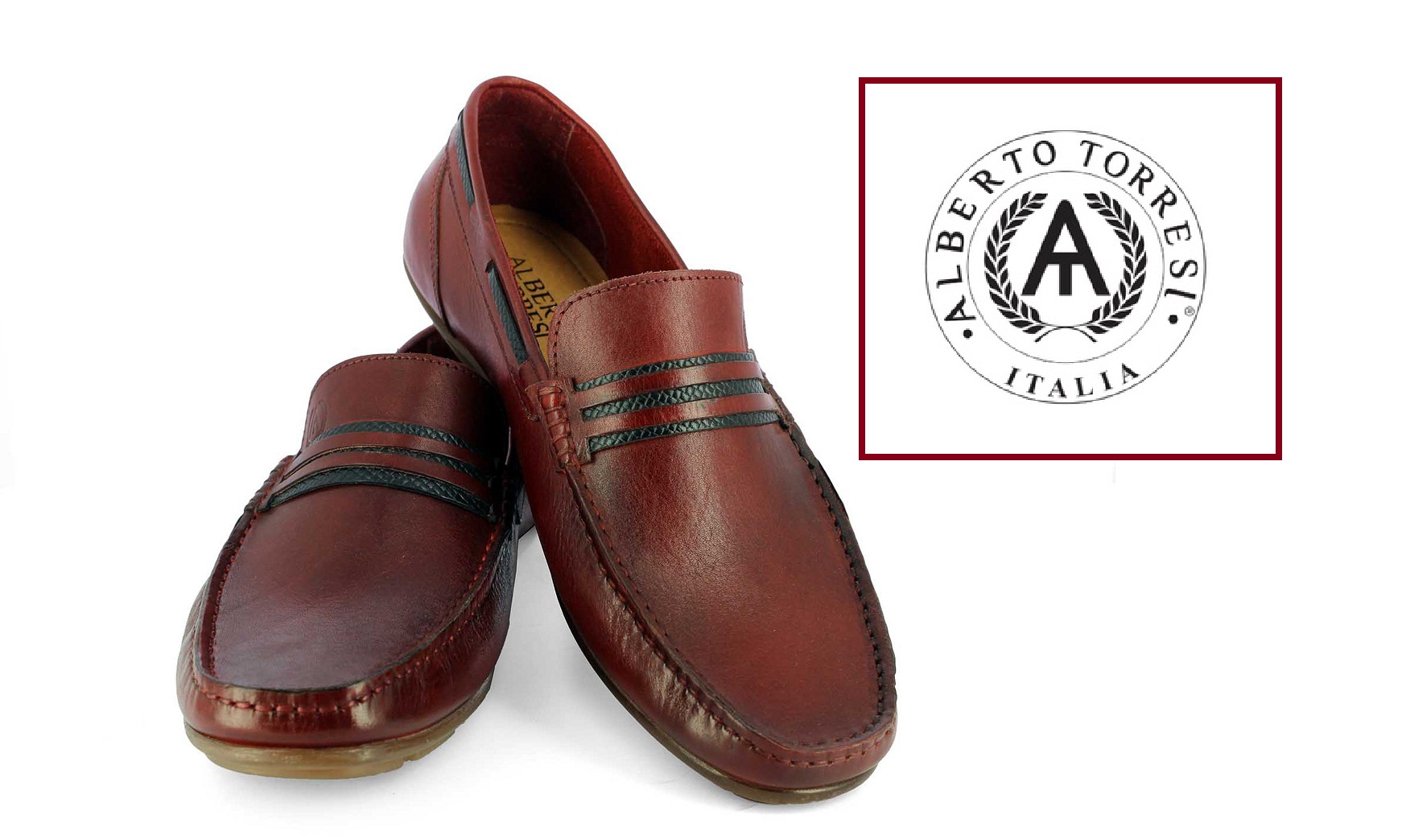WELLNESS
Plant a Vertical Garden to Beat the Heat
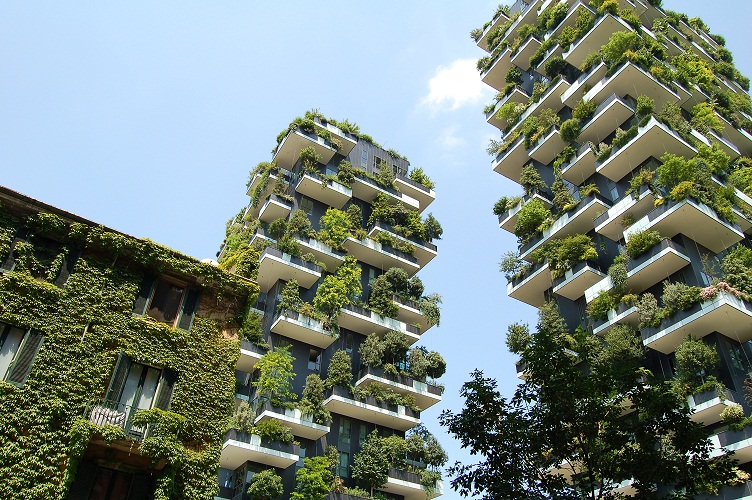
The need for a lattice or trellis with climbing vines, or a planter box with trailing vines,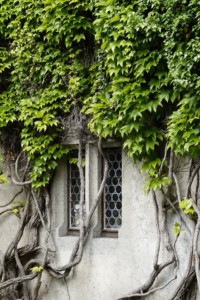 is most obviously felt in the cities to reduce temperatures. We are facing record-breaking summers this year. Buildings in cities under the pervasive influence of asphalt and concrete have become real ovens. Rising heat wave and water restrictions are forcing us to look for quick fix solutions to urban-heat-islands. The hard and dark surfaces in cities absorb heat and raise the surrounding ambient temperature forming urban-heat-islands. Due to this fact, temperature here is higher than the surrounding areas. As the temperature rises, we move inside to escape the heat. And attempt to keep cool indoors by using air conditioners that use a lot of energy.
is most obviously felt in the cities to reduce temperatures. We are facing record-breaking summers this year. Buildings in cities under the pervasive influence of asphalt and concrete have become real ovens. Rising heat wave and water restrictions are forcing us to look for quick fix solutions to urban-heat-islands. The hard and dark surfaces in cities absorb heat and raise the surrounding ambient temperature forming urban-heat-islands. Due to this fact, temperature here is higher than the surrounding areas. As the temperature rises, we move inside to escape the heat. And attempt to keep cool indoors by using air conditioners that use a lot of energy.
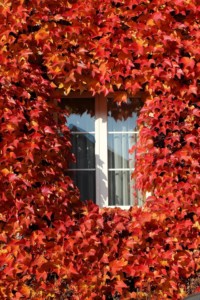 One of these days, city planners will wake up and introduce the concept of green-buildings or green-covering for the city walls. A building or wall covered by greenery will definitely lower indoor temperature, as this is a fantastic natural cooling system by providing shade and insulation. These vines should be planted on the south or west-facing walls shielding the house (buildings) where the sun is strongest thereby reducing indoor temperature. These
One of these days, city planners will wake up and introduce the concept of green-buildings or green-covering for the city walls. A building or wall covered by greenery will definitely lower indoor temperature, as this is a fantastic natural cooling system by providing shade and insulation. These vines should be planted on the south or west-facing walls shielding the house (buildings) where the sun is strongest thereby reducing indoor temperature. These
- providing shade to buildings
- interrupting solar radiation
- ‘Evapotranspiration’ (the process whereby leaves secrete water, which evaporates cooling the air).
A vertical garden of vines — is the option as a leafy green wall is low-tech and can quickly result in lower heating and cooling costs. These are also quick to grow and provide shading on the hottest side of the house and blocked out at least 6” from the wall to protect the wall and provide a buffer of cool air. Ask your local nursery which creepers are best suited to your climate and needs.
Choice is yours
There are dozens of vines to choose from. The growth habit and mass of color give charming appearance. Many have large leaves, brilliant flowers, and autumn color. Others are fragrant. Breathe in the scent of jasmine flowers growing right outside your bedroom window. A dense creeper (blue-flowered sky vine, Thunbergia grandiflora) not only reduces the heat but provide cover and a nesting area for birds, and many flowering vines are rich nectar sources for butterflies and birds.
Know Before You Grow
Ready to start cooling? Before planting vines, it’s important to know how they grow so that you can build the appropriate support for them. Vines fall into three climbing categories: twiners, like morning glory, jasmine, and mandevilla, reach their heights by twisting their growing tips around a slender support. Plants like passionflower vine climb with specialized tendrils that can hook onto twine or monofilament line. Other creepers have specialized rootlets that act like suction cups to hold the plant directly onto a brick or wooden structure.
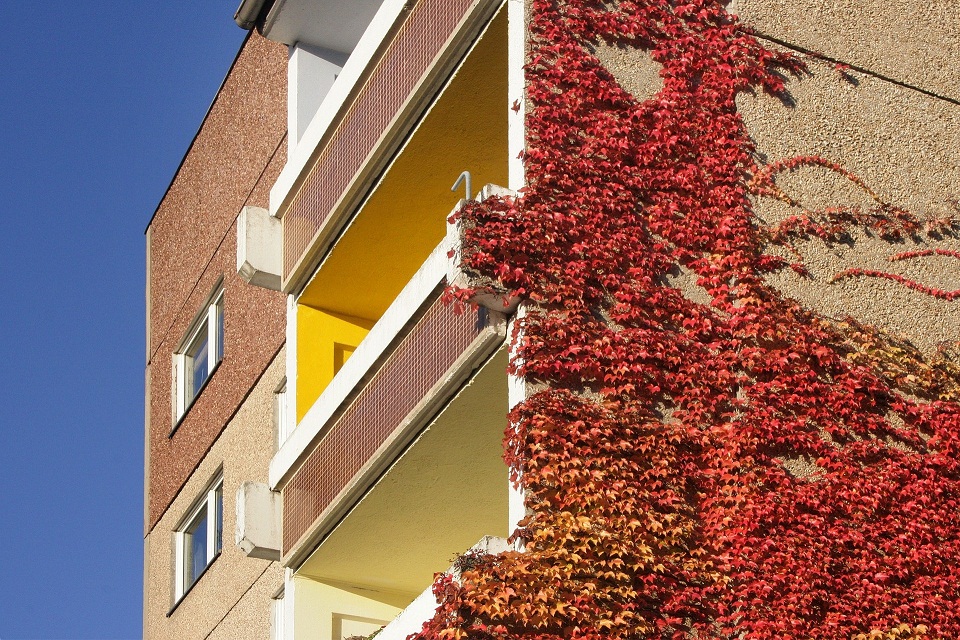
Support Your Local Vine
If you don’t want your vines attaching themselves to your home, you can build a trellis support from long bamboo poles lashed together and leaned against the wall or using a cascading effect. Trellises should be placed several inches away from walls to allow air movement between wall and vine and reduce humidity and possible mould and mildew growth. The best plant to grow on wall is Ficuspumila(climbing fig). It is a woody and hardy climber with small green leaves. It spreads along the wall without any support. The aerial rootlets cling to the rough surface of the building. This plant can literally convert an ordinary wall into a green-wall in true sense.
Experiment with Annual Vines
If you just want to see how vines would perform cooling your house, try some annuals first. Many annual vines are fast-growing tropical plants with brightly colored flowers that can hold up to the summer heat.
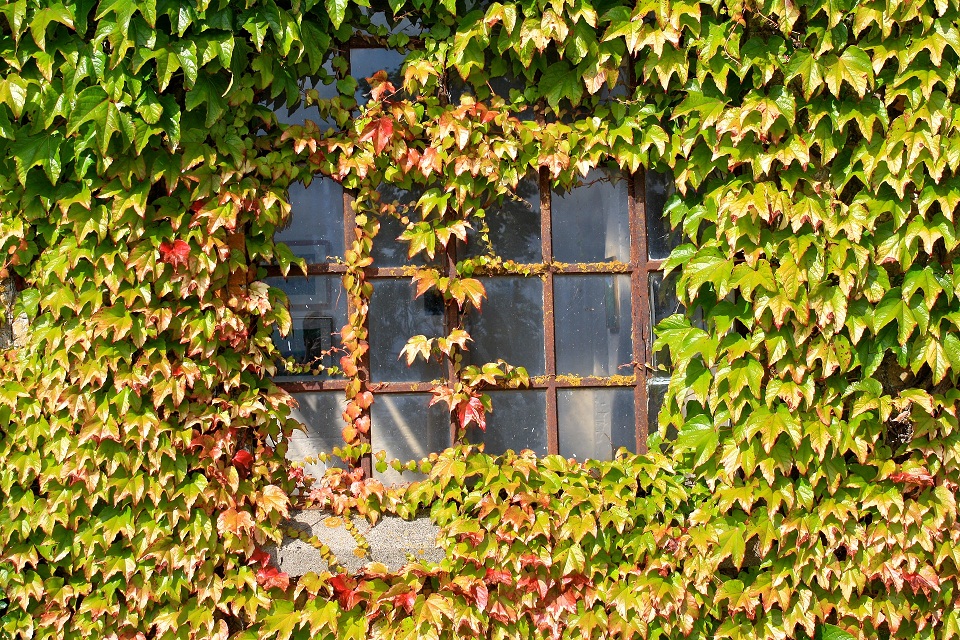
Use Perennial Vines
To moderate both winter and summer temperatures by maintaining a pillow of air, choose a fast-growing perennial vine. A wall of evergreen vines can reduce surface temperature fluctuations by 50%. The best time to plant or transplant them is late spring or early summer.
Shrub magic
Shrubs planted underneath windows channel wind upward and into first-story windows when working in tandem with a nearby shade tree. Leave a bit of space between the shrubbery and the home, as this will prevent moisture build up if humidity is a problem. Shrubs protect the lower portions of walls from heat gain by blocking sunlight. They also act as a windbreak in winter to help protect the house from cold air. Choose shrubs which are low maintenance and grow to a fixed height. Local varieties will do best.
Lastly remember that a well-planned building or house adds beauty, interest and increases property values.


